
The American Council of Engineering Companies (ACEC) of Idaho recently honored J-U-B with the 1st Place award in their 2021 Engineering Excellence Awards (EEA) for Water Resources projects. This top honor was awarded to the Redwood Creek Pipeline project that J-U-B completed for SUEZ Water Idaho, Inc. (SUEZ).
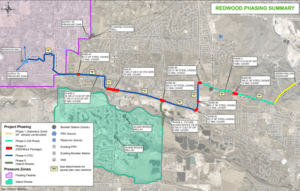 The working relationship between J-U-B and SUEZ spans several decades. Over that time, J-U-B has provided design and construction engineering services on dozens of projects, including the Redwood Creek Pipeline. SUEZ owns and operates the largest potable water system in the State of Idaho with a service area of approximately 155 square miles and over 100,000 residential, commercial, public authority, and fire service customers.
The working relationship between J-U-B and SUEZ spans several decades. Over that time, J-U-B has provided design and construction engineering services on dozens of projects, including the Redwood Creek Pipeline. SUEZ owns and operates the largest potable water system in the State of Idaho with a service area of approximately 155 square miles and over 100,000 residential, commercial, public authority, and fire service customers.
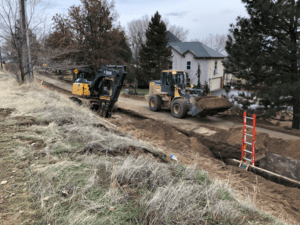 The Redwood Creek Pipeline project’s purpose was to increase available water supply and provide a redundant source to SUEZ’s Hidden Hollow Tank by transmitting excess water from Redwood Creek Well, with potential future connections to other sources in the area. It involved a new pipeline from Redwood Creek Well to Hidden Hollow Tank and preliminary engineering related to the additional pipeline necessary to transmit excess water south of the Boise River into the Redwood Creek transmission main. Design tasks involved an alignment study/hydraulic analysis/alternatives analysis, topographic ground survey, utility base mapping, preliminary engineering report, construction plans, agency permitting, easement negotiations, bidding services, and construction support. The project also entailed coordination with multiple stakeholders and utilities to acquire needed information, easements, access, and permits.
The Redwood Creek Pipeline project’s purpose was to increase available water supply and provide a redundant source to SUEZ’s Hidden Hollow Tank by transmitting excess water from Redwood Creek Well, with potential future connections to other sources in the area. It involved a new pipeline from Redwood Creek Well to Hidden Hollow Tank and preliminary engineering related to the additional pipeline necessary to transmit excess water south of the Boise River into the Redwood Creek transmission main. Design tasks involved an alignment study/hydraulic analysis/alternatives analysis, topographic ground survey, utility base mapping, preliminary engineering report, construction plans, agency permitting, easement negotiations, bidding services, and construction support. The project also entailed coordination with multiple stakeholders and utilities to acquire needed information, easements, access, and permits.
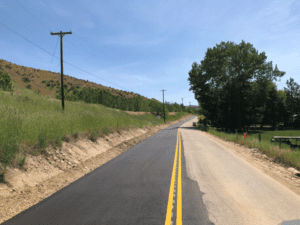 The magnitude of the project and desired completion date required a proactive approach to begin several key elements in parallel – the routing analysis, initial contact with landowners/homeowners, agency coordination and permitting, as well as identification of congested utility corridors and critical time-sensitive crossings. J-U-B also recommended a phased schedule to complete as many design tasks as possible concurrently while focusing on efficiency and practical solutions.
The magnitude of the project and desired completion date required a proactive approach to begin several key elements in parallel – the routing analysis, initial contact with landowners/homeowners, agency coordination and permitting, as well as identification of congested utility corridors and critical time-sensitive crossings. J-U-B also recommended a phased schedule to complete as many design tasks as possible concurrently while focusing on efficiency and practical solutions.
When SUEZ selected J-U-B as the engineering consultant, the project solution was conceptual, but turning the project into reality required successful navigation of many unique challenges. The alignment study phase considered utility congestion, surface repair types, public disruption, critical crossings, anticipated groundwater elevations, permitting requirements, easement needs, overall length, and potential costs. The final design employed over 1,800 feet of trenchless technology design related to horizontal directional drilling and boring/jacking applications.
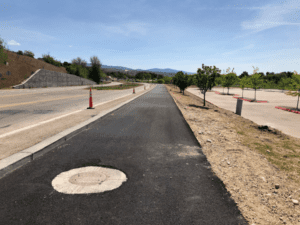 J-U-B ultimately negotiated eight private easements, executed five license agreements for irrigation facility crossings, designed and obtained permitting approval for three flushing stations, and worked through a variety of permitting and construction approval requirements with Ada County, ACHD, Andeavor Petroleum, the Cities of Boise and Eagle, Idaho Department of Environmental Quality (IDEQ), Idaho Transportation Department (ITD), and the United States Army Corps of Engineers.
J-U-B ultimately negotiated eight private easements, executed five license agreements for irrigation facility crossings, designed and obtained permitting approval for three flushing stations, and worked through a variety of permitting and construction approval requirements with Ada County, ACHD, Andeavor Petroleum, the Cities of Boise and Eagle, Idaho Department of Environmental Quality (IDEQ), Idaho Transportation Department (ITD), and the United States Army Corps of Engineers.
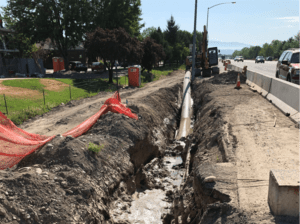 This project took a small army of resources to complete successfully in a short timeframe while navigating various complex challenges. Josh Elliott served as the Project Manager and one of the primary design engineers, but the project succeeded thanks to the efforts of many key team members, including a permitting team, led by Lisa Bachman, that operated in parallel with the design team to obtain permits, approvals, and easements. Without the hard work of Lisa Bachman, Allen Beahm, Addie Coffelt, Phil Krichbaum, Bryant Kuechle, Ellie Libby, Bert Nowak, and Brad Watson, project success could not have been a possibility. A special thanks goes to Phil Krichbaum for providing much of the technical content for the proposal and guiding design from concept to construction.
This project took a small army of resources to complete successfully in a short timeframe while navigating various complex challenges. Josh Elliott served as the Project Manager and one of the primary design engineers, but the project succeeded thanks to the efforts of many key team members, including a permitting team, led by Lisa Bachman, that operated in parallel with the design team to obtain permits, approvals, and easements. Without the hard work of Lisa Bachman, Allen Beahm, Addie Coffelt, Phil Krichbaum, Bryant Kuechle, Ellie Libby, Bert Nowak, and Brad Watson, project success could not have been a possibility. A special thanks goes to Phil Krichbaum for providing much of the technical content for the proposal and guiding design from concept to construction.
© 2024 J-U-B Engineers, Inc. All Rights Reserved. Privacy | Electronic Documents/Data License